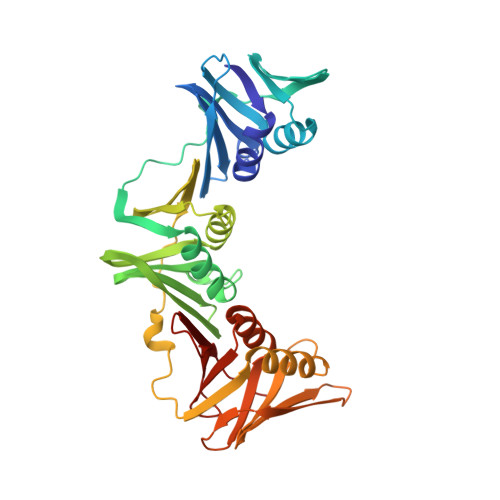Structural and Thermodynamic Dissection of Linear Motif Recognition by the E. coli Sliding Clamp
Yin, Z., Kelso, M.J., Beck, J.L., Oakley, A.J.(2013) J Med Chem 56: 8665-8673
- PubMed: 24090409
- DOI: https://doi.org/10.1021/jm401118f
- Primary Citation of Related Structures:
4K3K, 4K3L, 4K3M, 4K3O, 4K3P, 4K3Q, 4K3R, 4K3S - PubMed Abstract:
Protein-protein interactions based on linear motif (LM) recognition play roles in many cell regulatory processes. The E. coli sliding clamp is a protein mediator of replisome formation, which uses a common surface pocket composed of two subsites (I and II) to interact with LMs in multiple binding partners. A structural and thermodynamic dissection of sliding clamp-LM recognition has been performed, providing support for a sequential binding model. According to the model, a hydrophobic C-terminal LM dipeptide submotif acts as an anchor to establish initial contacts within subsite I, and this is followed by formation of a stabilizing hydrogen-bonding network between the flanking LM residues and subsite II. Differential solvation/desolvation during positioning of the submotifs is proposed as a driver for the sequential binding. Our model provides general insights into linear motif recognition and should guide the design of small-molecule inhibitors of the E. coli sliding clamp, an emerging antibacterial target.
Organizational Affiliation:
School of Chemistry, University of Wollongong , Northfields Avenue, Wollongong 2522, NSW, Australia.



















